

There’s often a comparison made between Budapest and Vienna, a grudging admission amongst Hungarians that despite the architectural similarity, the Austrian capital is far prettier because it’s cleaner. Indeed, unlike Vienna, which was untouched by communism, Budapest now stands at a juncture of recovery in which many of the buildings still bear the scars of Hungary’s recently oppressive past. The events that took place here—a string of dictatorships concluding not long ago with a brutal Russian regime—are still relevant and haven’t yet been sorted out, marking every brick and crumble of mortar. A cleaner Budapest would be a fraud, a denial of its history and its current mood, of the profound regret for what once was and the continuing struggle to heal. Though tremendous pockets of beauty exist—especially Parliament, Chain Bridge, the Basilica, the Buda castle and the sprinkle of preserved Art Nouveau architecture throughout the city—it’s too soon for sparkle here.
Walking through Budapest, impressions of a once flourishing country flame my imagination. Apartment building entrances, arched and high ceilinged—fit for horse-drawn carriages to trot into courtyards—are now water-stained and peeling. But a glimmer of their magnificence remains. Detail work on façades—statues supporting iron-railing balconies, lion heads, high-relief carvings—is thickly coated with vehicle emissions and in many cases falling off in pieces, but is nonetheless a testament to a cultural appreciation of artistic sculpture. All are links to the old life, from a time before the downfall of a country when people fought and lost to protect it.
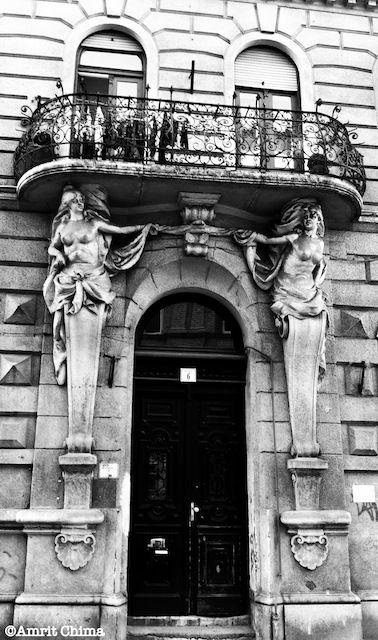 Statues holding up an apartment terrace, a common sight in Budapest.
Statues holding up an apartment terrace, a common sight in Budapest.
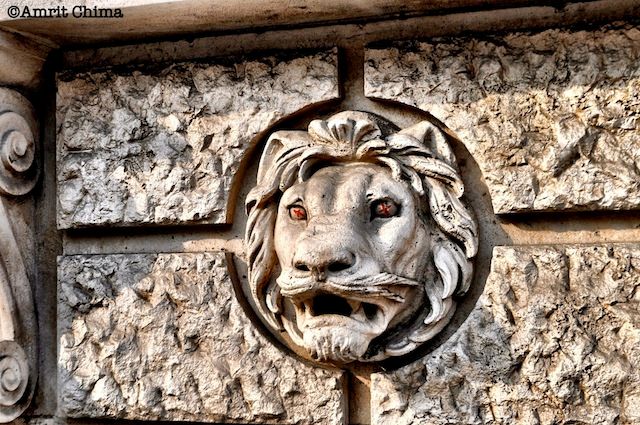 High relief of a lion’s head. Someone grafittied red “Xs” on the eyes.
High relief of a lion’s head. Someone grafittied red “Xs” on the eyes.
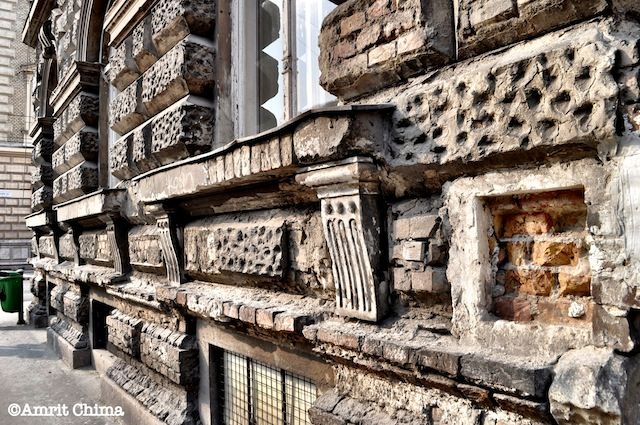 Crumbling façade of a building near Kodály Körönd on Andrássy Út
Crumbling façade of a building near Kodály Körönd on Andrássy Út
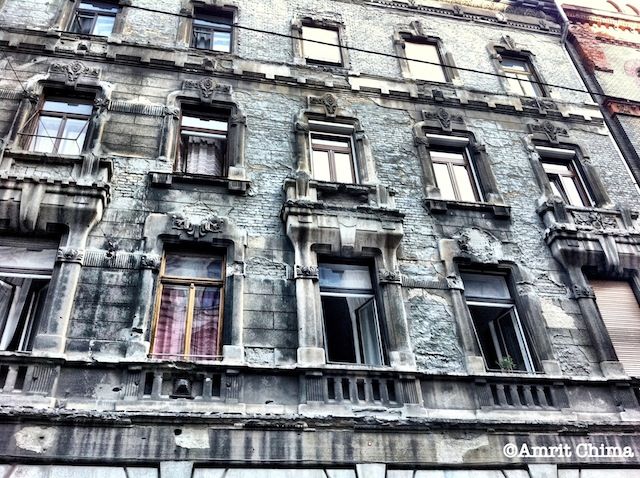 Beautiful building laid waste by lack of funds, time and the elements.
Beautiful building laid waste by lack of funds, time and the elements.
Kodály Körönd is perhaps one of the most beautiful points along Andrássy Út, Budapest’s main thoroughfare. There are four manor-style buildings at this intersection, adorned with turrets and ornate decoration, each forming a quarter segment of a circle. Up close, evidence of corrosion is apparent on all but one of the edifices, the northeast structure by far the worst, supported by heavy scaffolding and netting to protect pedestrians from the deteriorating façade. The southeast corner—once home to Hungarian composer Zoltán Kodály after whom the circle is named—is the only one that has been entirely refaced. It is a stark contrast to the others, a stunning representation of 1800s Hungarian glory. Yet I prefer the southwest and northwest corners. The southwest is arguably the most architecturally elaborate. It has been somewhat renovated, but its visibly abandoned attics—now likely home to families of birds—are still in ruins, begging to be explored for whatever relics might be up there, coated in a half-century of dust. The northwest is uniquely hand-painted, although the intricate work is difficult to see from afar. It’s a source of pride for Hungarians who know little will be done to protect or restore this art in a country that has a modest budget for such endeavors.
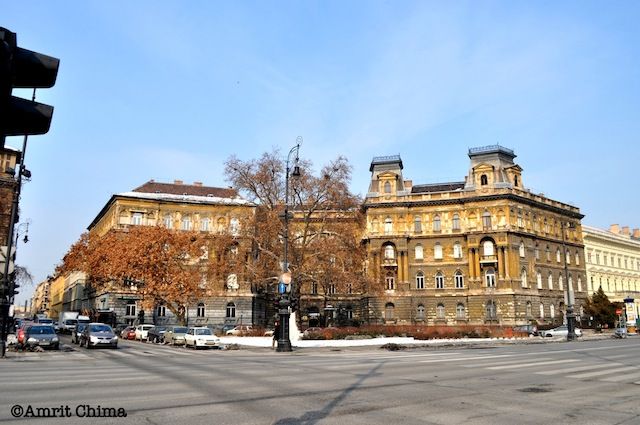 The deteriorating northeast corner of Kodály Körönd
The deteriorating northeast corner of Kodály Körönd
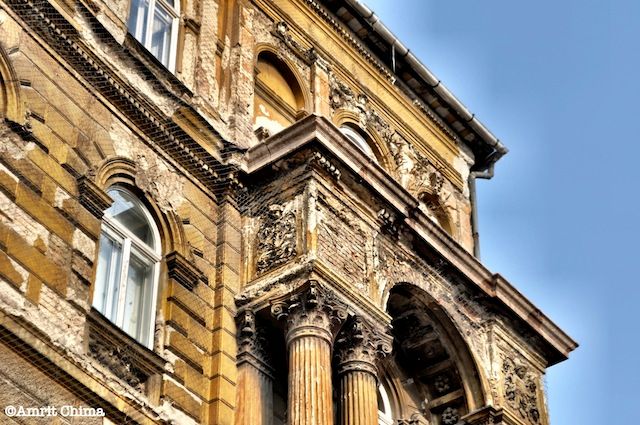 Detail of the northeast corner of Kodály Körönd
Detail of the northeast corner of Kodály Körönd
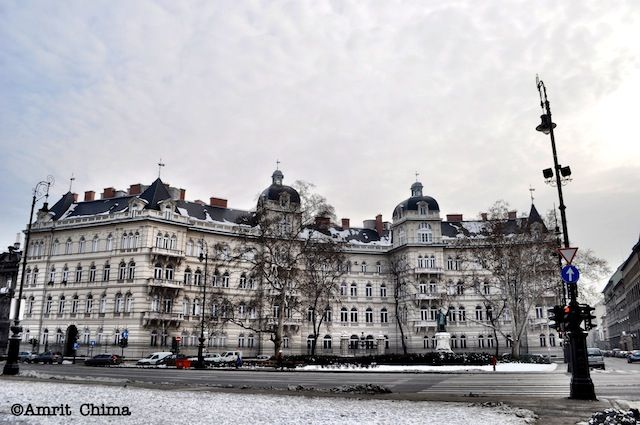 The resplendent southeast corner of Kodály Körönd
The resplendent southeast corner of Kodály Körönd
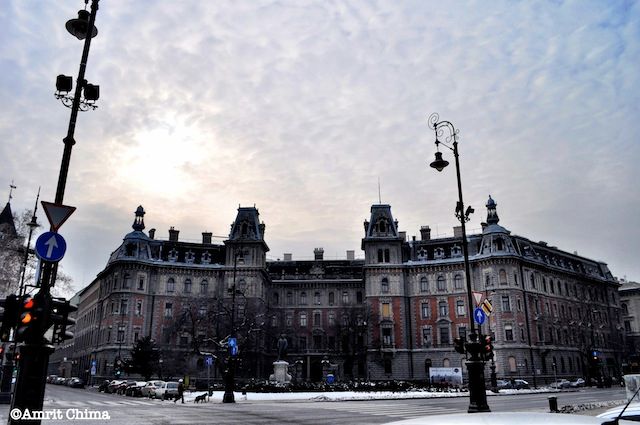 The southwest corner of Kodály Körönd
The southwest corner of Kodály Körönd
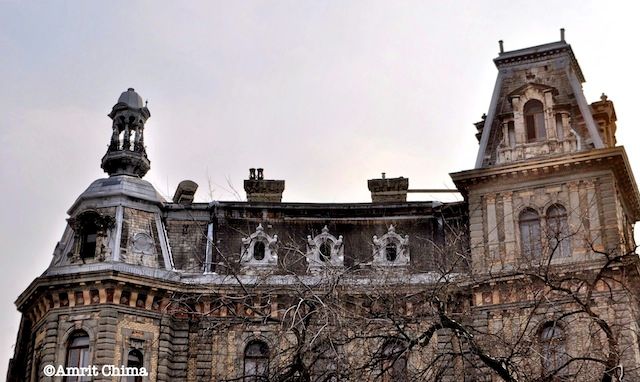 The attic of the southwest corner of Kodály Körönd
The attic of the southwest corner of Kodály Körönd
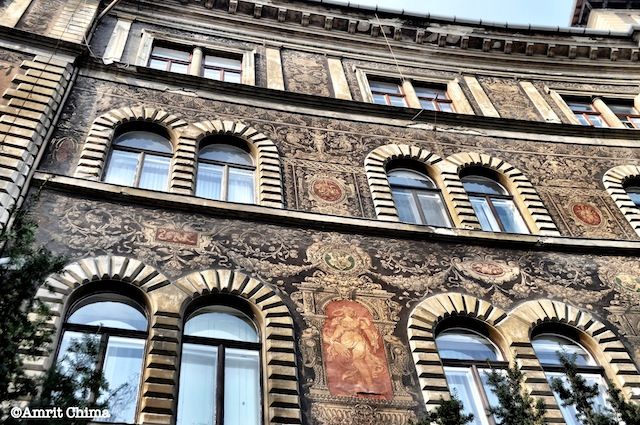 Detail of the northwest corner of Kodály Körönd
Detail of the northwest corner of Kodály Körönd
Standing in the center of Kodály Körönd, surrounded by grandeur, I’m in a time before the collapse. And today the buildings are still being used as they always have been—as homes. Occupied by tenants, they are not roped off as museums (with the exception of Zoltán Kodály’s apartment). They’ve endured the Nazi’s—the circle named after Hitler from 1938-1945—and communism, emerging from those harrowing events a little worn, just like the people who still live in them today.
Hungarian history unfolds more explicitly in many other parts of the city. In October of 1956 citizens rose up to speak out against their Russian oppressors. However, what began as a peaceful protest of students rallying against communist ideals soon broke out into desperate war as Soviet tanks entered Budapest to stifle the demonstration that threatened to overcome the entire country. Russians blasted the streets with Molotov cocktails, and Hungarian militias arose in retaliation, removing red stars, burning communist books, and killing Soviet sympathizers. War consumed the city for nineteen days until the Russians forced Hungary back into submission. Although this story is over fifty-five years old, it still lives and breathes today. Bullet holes etched into building façades tell some of that tale.
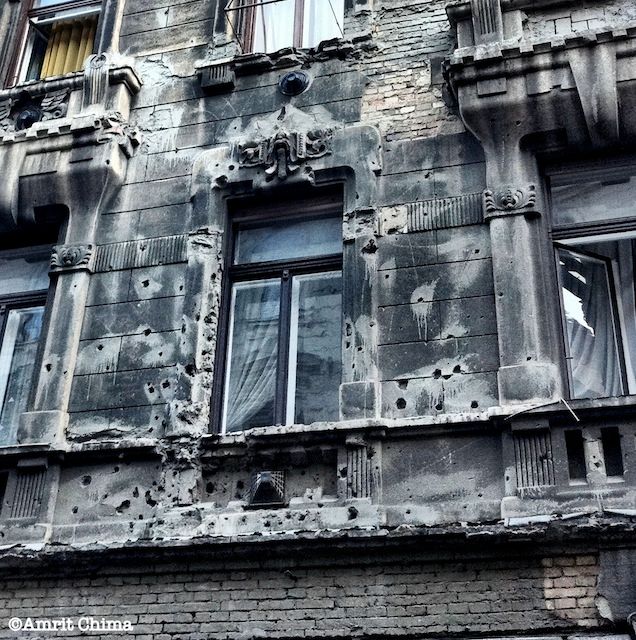 This particular pattern of bullet holes around the window brings the reality of war times to the forefront. Someone was in that apartment, spotted by a shooter on the ground. (Note that some of these scars could be from WWII, but the general consensus is that they are from the revolution.)
This particular pattern of bullet holes around the window brings the reality of war times to the forefront. Someone was in that apartment, spotted by a shooter on the ground. (Note that some of these scars could be from WWII, but the general consensus is that they are from the revolution.)
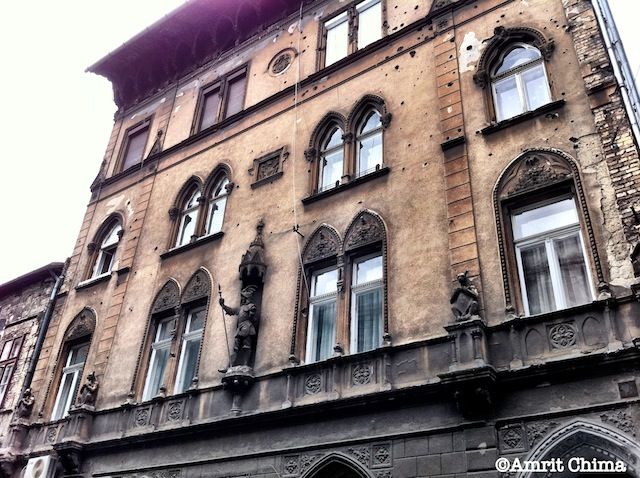 Bullet holes scattered across the façade of a building
Bullet holes scattered across the façade of a building
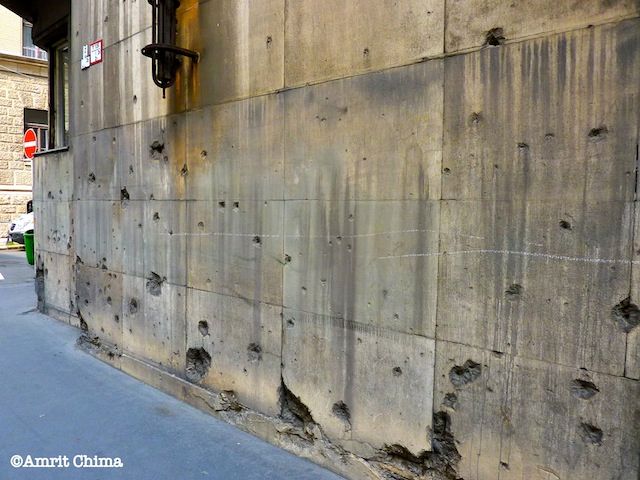 Bullet holes in district five’s police station
Bullet holes in district five’s police station
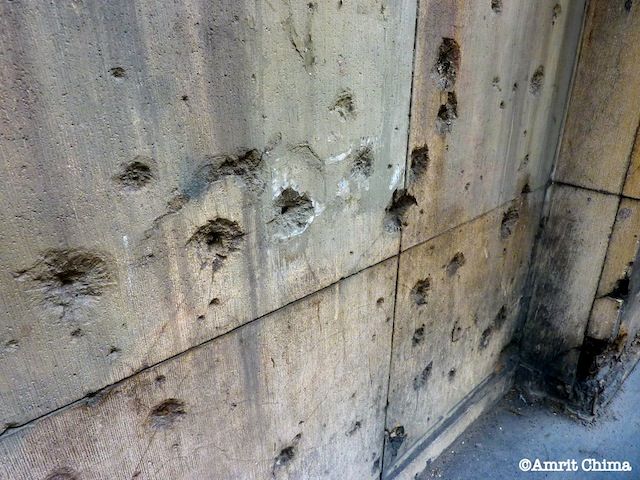 Bullet holes in district five’s police station
Bullet holes in district five’s police station
For all its grueling recent history, Hungary was once an empire, its capital a European center of art and culture, grander than Paris, London, Rome, and yes, even Vienna. Not so long ago thinkers, composers, and inventors gathered in Budapest to exchange ideas and expand their intellectual knowledge. Today this is easy to forget. Not only was the architecture damaged and forced to slowly fade and wither, Hungary’s reputation as a great and powerful nation was also pillaged. Snail-pace renovations are taking place, speaking to the people’s resolve to one day recover. Until then, before the scars are plastered over, the remains will be here, weathered and gritty, telling their stories.
Follow Untapped Cities on Twitter and Facebook! Get in touch with the author at @AmritKChima.


